You can do a couple of things to get the smell out of your dehydrator. One option is to fill the dehydrator with baking soda and let it sit overnight. You can also try vinegar or lemon juice. If all else fails, you can try putting a dishwasher tablet in the water tank.
Not only does it make your kitchen smell bad, but it can also transfer to your food. The build-up of food smells can lead to bacteria growth and an increase in mold.
The dehydrator’s smell makes it hard to enjoy your food, and you might not want it to linger in your kitchen. Here are a few tips on how to get smell out of dehydrator so you can enjoy your delicious food without any unwanted odors.
How to Get Smell Out of Dehydrator: Methods with Reasons
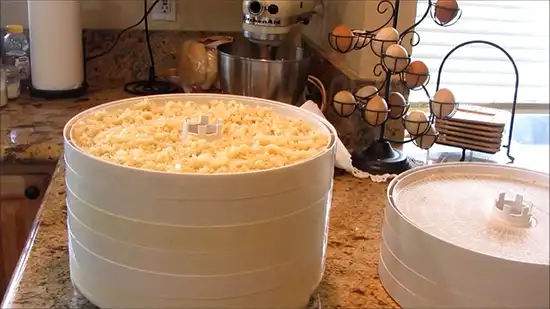
If your dehydrator starts to smell, it is likely due to bacteria or mold build-up. You will need to clean the dehydrator to get rid of the smell. Below are some methods with step-by-step instructions on how to clean a dehydrator and remove the smell.
Vinegar to Removing Dehydrator Smell.
Vinegar is an effective and natural way of getting rid of dehydrator smell. Here is a step-by-step guide on how the dehydrator smell can be removed using vinegar:
- Unplug the dehydrator and remove all the food from the unit.
- Mix equal parts water and vinegar in a bowl.
- After the vinegar solution has been applied to the inside of the dehydrator, clean it with a cloth or sponge.
- Ensure the dehydrator is rinsed with clean water and that you dry it thoroughly with a clean towel.
- Simply place a bowl of vinegar inside the dehydrator and close the unit. Allow it to sit for 24 hours before removing the bowl of vinegar. The vinegar will absorb the unpleasant odors, leaving your dehydrator smelling clean and fresh.
- Plug in the dehydrator and place fresh food inside to dry. The vinegar smell should be gone.
Why Vinegar Removes Dehydrator Odors?
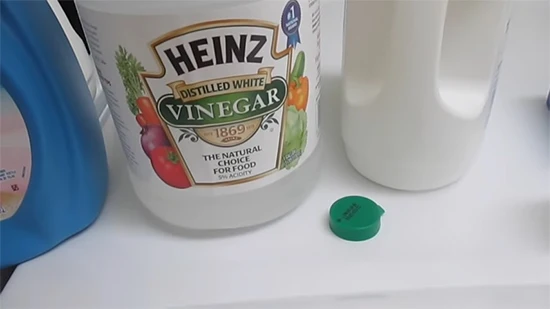
The pungent smell of vinegar will quickly overpower the weaker scent of a dehydrator. This is because vinegar is an acidic substance, and it chemically breaks down odor-causing molecules. Vinegar is a very effective disinfectant and will help to kill any bacteria that may be present.
Use Boiled Water or Steam to Remove the Dehydrator Smell.
If your dehydrator begins to smell, there are a few simple things to remove the odor. Boiling water and steam are both effective at removing smells from dehydrators. Here I will discuss removing the smell from an electric dehydrator:
- Unplug the dehydrator and empty any remaining food.
- Remove the trays or shelves from the dehydrator and set them aside.
- Boil a pot of water on the stove.
- Carefully place a pot of boiling water inside the dehydrator.
- Allow the water to sit in the dehydrator for 15-20 minutes.
- Drain the water from the dehydrator and discard it.
- Use a soft cloth or sponge to wipe down the inside of the dehydrator, being sure to reach all nooks and crannies.
- Rinse the dehydrator with clean water and dry thoroughly with a clean towel.
- Allow the dehydrator to air out for a few hours before using it again.
Why Boiled Water or Steam Will Remove Odor From the Dehydrator?
Water or steam boiled in the dehydrator will eliminate the smell from the dehydrator because it will kill the bacteria causing the smell. The heat from boiling water or steam will also break down the compounds causing the smell.
This will make it easier for you to clean the dehydrator and eliminate the bad smell. Boiled water or steam is also an excellent way to remove other smells from your home, like cooking.
How to Remove Dehydrator Smell with Charcoal?
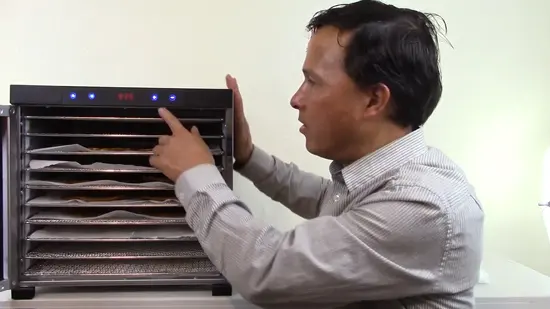
If you find that the dehydrator has an unpleasant smell, don’t worry this is perfectly normal. There are easy ways to eliminate the dehydrator smell using charcoal. Here are the steps:
- Ensure the dehydrator is unplugged and cool to the touch. Then, remove any food or debris from the dehydrator tray.
- Place a layer of activated charcoal on the bottom of the dehydrator tray. You can find activated charcoal at most health food stores.
- Once the charcoal is in place, replace the dehydrator tray and cover it with a lid or plastic wrap.
- Let the charcoal sit in the dehydrator for 24 hours to absorb the smell. After 24 hours, remove the tray and discard the charcoal.
- Wash the dehydrator tray with soap and water to remove any residue. Your dehydrator should now be free of any unpleasant smells.
Why will Charcoal Remove the Smell from the Dehydrator?
Charcoal is a highly effective tool for removing unpleasant smells from dehydrators as they are highly absorbent, meaning that it can quickly trap and eliminate odors.
Charcoal does not produce fumes or chemicals, so it is a safe option to use in the electric dehydrator. Simply placing a few pieces of charcoal in your dehydrator will eliminate unpleasant smells.
Removing the Dehydrator Smell with Baking Soda.
- Begin by unplugging the dehydrator and removing all of the trays. If possible, take the dehydrator outside to avoid making a mess in your kitchen.
- Make a baking soda paste using 1 part baking soda and 3 parts water. Apply the paste to all of the surfaces of the dehydrator, including the trays, lid, and heating element.
- Allow the paste to sit for at least 30 minutes before wiping it away with a damp cloth.
- Rinse the dehydrator thoroughly with clean water to remove any residual baking soda.
- Place the dehydrator back in its original location and plug it in. Turn it on to its highest setting and allow it to run for at least an hour to help remove any remaining odors.
How Baking Soda Can Help Remove Dehydrator Odors?
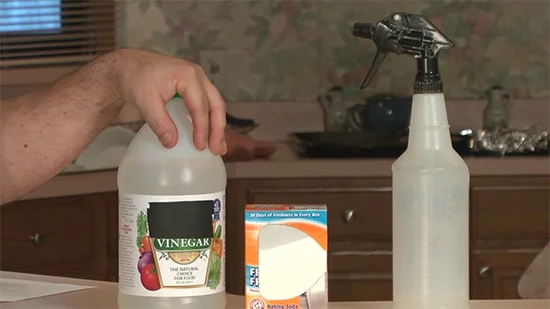
When foods are dehydrated, their water content is removed, which can intensify their smell. This is especially true for strong-smelling foods like onions and garlic. Baking soda is a natural odor absorber, so sprinkling a layer of baking soda at the bottom of the dehydrator will help remove unwanted smells.
Baking soda is an effective way to remove odors from a dehydrator. When sprinkled on the bottom of the appliance, baking soda helps to neutralize smells and freshen the air. Baking soda is safe and non-toxic, making it an ideal solution for removing odors.
How to Use Coffee Grounds for Dehydrator Smell Removal?
Coffee grounds are a great way to eliminate the smell of a dehydrator from your home. The following step-by-step guide will show you how to use them:
- Begin by brewing a pot of coffee. For this, you can use any coffee grounds, but dark roast coffee grounds tend to work best.
- Once the coffee is brewed, pour it into a bowl and add a handful of coffee grounds.
- Stir the coffee and grounds until the grounds are evenly distributed.
- Place the bowl of coffee and coffee grounds in the dehydrator and let it run for about 30 minutes.
- After 30 minutes, remove the bowl from the dehydrator and discard the coffee grounds. Your home should now be free of the dehydrator smell.
What Happens to the Odors When You Put Coffee Grounds in Dehydrators?
During the drying process in your dehydrator, the odors from the coffee beans will be dispersed throughout the machine. Over time, the coffee grounds will dry out, and the odors will dissipate.
The coffee grounds will eventually become brittle and lose their flavor. If you are looking for a way to remove odors from your dehydrator, you can try placing a bowl of coffee grounds inside the machine.
How Long Does it Take to Dehydrate Bananas in Electric Dehydrators?
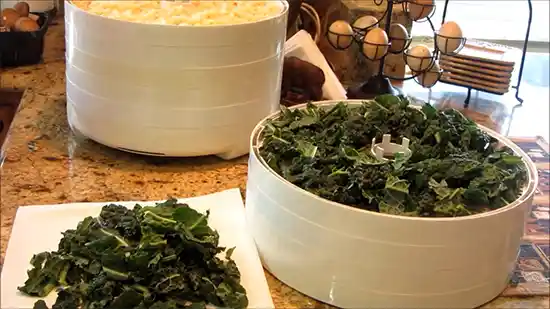
The answer depends on a few factors, including the dehydrator you are using and the size of the bananas. Dehydrating banana is an excellent method of preserving them for later use. And while there are several methods you can use to dehydrate bananas, electric dehydrators are by far the quickest and most efficient.
While traditional oven drying can take upwards of 12 hours, electric dehydrators can dehydrate bananas in as little as four hours. You can expect it to take anywhere from 6 to 8 hours to dehydrate bananas in an electric dehydrator. It may take a bit longer if you use a smaller dehydrator or your bananas are on the larger side.
The key is to slice the bananas thinly, about a quarter inch thick, so that they will dry evenly. Once sliced, the bananas can be placed on the dehydrator’s trays and left to dry at a low setting between 125 and 135 degrees Fahrenheit.
After four hours, the bananas should be leathery and pliable, with no signs of moisture. Checking on the bananas periodically is best to ensure they are drying evenly. Once done, bananas will be shrunken and leathery, with a dark brown color.
How Long Do You Dehydrate Beef Jerky in Electric Dehydrators?
The exact length of time it takes to dehydrate beef jerky in an electric dehydrator can vary depending on many factors, including the size and thickness of the meat, the humidity level of the dehydrator, and the desired level of dryness.
Thinner pieces of meat will take less time to dehydrate than thicker pieces. Dehydrators with higher humidity levels will require more prolonged dehydration than those with lower humidity levels. If you are using an electric dehydrator, most recipes recommend dehydrating the beef for 3-5 hours.
The best way to determine the dehydration time for your specific situation is to check the beef jerky periodically and remove it from the dehydrator when it reaches the desired dryness level.
What Is the Time Required to Dry Fruit in an Electric Dehydrator?
Depending on the fruit type and desired level of dryness, the answer will vary. The drying time for fruit with an electric dehydrator will vary depending on the type and thickness of the fruit, as well as the temperature and humidity of the room.
Once the drying process has been completed for 12 hours, it is time to check if it is done. Once the fruit has cooled to room temperature, remove it from the dehydrator and test it for dryness. Fruits with thin skins, like berries, can be dried in eight hours, while apples, which have thicker skins, may take up to 24 hours.
Electric dehydrators are a great way to preserve fruit. By removing the water content, fruit can be stored for months without spoiling. And because dehydration does not rely on chemicals or added sugar, it is a healthy way to enjoy fruit all year.
A Similar Topic: Are Aluminum Foil Dehydrator Trays Good for Keeping Fruit from Sticking?
How Long Will Dehydrated Onions Last?
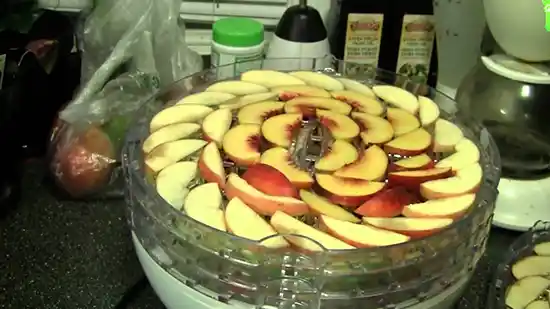
Dehydrated onions are a great way to add flavor to your cooking without all the chopping and tear-inducing slicing. They also have a longer shelf life than fresh onions, so you can stock up and always have them on hand. But how long does dried onion lasts?
When stored in a cool, dry place, dehydrated onions will stay fresh for up to a year. That means you can stock up when they are on sale and not worry about them going bad before you use them.
And since they are easy to rehydrate, you can add them to just about any dish, soups, stews, chili, and more. So next time you see dehydrated onions on sale, grab a few packages and add them to your pantry staples. They will last until you are ready to use them, adding delicious flavor to your favorite dishes.
Do Dehumidifiers Get Rid of Odours from Food Dehydrator?
Dehumidifiers are an essential part of the food dehydrating process. Reducing the amount of air moisture helps prevent mold and bacteria from developing in food. Dehumidifiers also help to remove odors from food dehydrators.
Dehumidifiers are devices that are used to remove moisture from the air. They work by drawing in air and then passing it over a cold coil. This condenses the water vapor in the air, and the water is then collected in a tank.
Dehumidifiers can be used for various purposes, including reducing or removing odors from food dehydrators. When food is dehydrated, it can release strong odors. These odors can be unpleasant and can linger in the dehydrator.
Dehumidifiers are often used in homes and businesses to help reduce or altogether remove the air’s humidity level. This can be important for comfort and health reasons, as high humidity can lead to mold and mildew.
By using a dehumidifier, you can reduce or remove these odors. To do this, simply place the dehumidifier near the dehydrator and turn it on.
Does Dehydrating Food Take Away Nutrients?
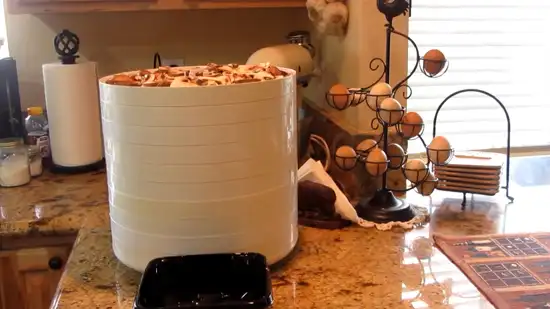
When asked whether dehydrated food has nutrients or not, there is no simple yes or no answer. The fact is that nutrients are lost when you dehydrate, but the amount lost depends on many factors. These include:
- The type of food being dehydrated
- The temperature at which dehydration occurs
- The length of time the food is dehydrated
Foods denser in nutrients, such as fruits and vegetables, will lose more nutrients during dehydration than foods lower in nutrients, such as meats. Additionally, dehydration at higher temperatures will result in more significant nutrient loss than dehydration at lower temperatures. If food is dehydrated for a prolonged time, more nutrients will be lost.
So, while it is true that some nutrients are lost during the dehydration process, the overall nutritional value of food is not significantly decreased. Dehydrated foods can still provide substantial nutrients and health benefits.
Is it Possible to Minimize Nutrient Loss During Dehydration?
There are several ways to minimize nutrient loss when dehydrating foods. These include:
- Using a lower temperature for dehydrating
- Reducing the amount of time spent dehydrating
- To preserve nutrients, a vacuum sealer is used
Dehydrating foods at lower temperatures will help to preserve more nutrients. Dehydration should ideally be done at temperatures below 115 degrees Fahrenheit. If using a dehydrator, set it to the “fruit” or “vegetable” setting, typically around 105 degrees Fahrenheit.
Dehydrating foods for shorter periods will also enhance the preservation of nutrients. The general rule is that the longer food is dehydrated, the more nutrients are lost. So, dehydrate fruits and vegetables for 8-12 hours and meats for 12-24 hours.
A vacuum sealer to preserve nutrients is another excellent way to keep dehydrated foods nutritious. Vacuum sealing prevents oxygen from exposure to food, which can cause nutrient loss. It also keeps food fresh for extended periods, allowing you to enjoy dehydrated foods for months or even years.
Finally, adding dehydrated foods to other dishes is a great way to get the most out of their nutrition. Dehydrated fruits and vegetables can be added to soups, stews, casseroles, and more. This allows you to reap the nutritional benefits of dehydrated foods even if some nutrients are lost during dehydration.
Dehydrating foods helps to maintain their freshness, flavor, and nutrition. By following the tips above, you can maximize the nutritional value of your dehydrated foods.
Does Dehydrating Food Kill Bacteria?
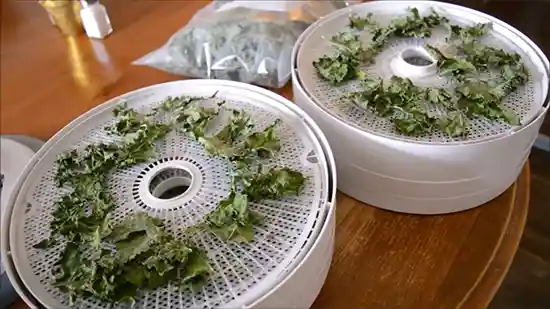
A direct yes or no answer to the question of whether dehydrating food takes away nutrients or not is not possible. It depends on how long the food is dehydrated and at what temperature. While high temperatures can kill bacteria, the temperatures used in dehydration are not high enough to reliably kill all bacteria.
Some dehydration methods, such as freeze drying, do not kill bacteria but simply remove water from them. If done correctly, this can effectively stop the growth of bacteria. Other dehydration methods, such as oven drying, can kill bacteria.
You should dehydrate your food at a high enough temperature to kill bacteria. If you are concerned about bacteria, use a dehydration method known to kill bacteria, such as oven drying.
Dehydration only removes water from food. Bacteria, yeasts, and molds need water to grow, so dehydrating food will prevent them from growing. These microorganisms can still be present in the food before dehydration. If they are not killed by heat during cooking or other processing, they can survive dehydration and contaminate the food when it is rehydrated.
Additional Tips and Advice on Removing Dehydrator Odor
If you use your dehydrator regularly, it’s a good idea to deep clean it every few months to prevent build-up and ensure it continues running smoothly. Here are some additional tips and advice:
- Always clean your dehydrator immediately after use to prevent smells from setting in.
- If your dehydrator has removable racks, wash them in the sink with warm soapy water after each use.
- If you’re drying particularly smelly foods, like onions or garlic, try placing them on a separate rack from the other foods to prevent the smell from transferring.
- Whenever you are not using your dehydrator, keep it somewhere cool and dry.
- Consider investing in a dehydrator with an automatic shut-off feature. This will help prevent any accidents leaving the dehydrator on for too long that could cause it to start smelling.
On a Final Note
If you have tried the methods and the guided steps mentioned above and still find the smell persists, you may need to deep clean your dehydrator. To do this, you can disassemble the machine and wash all parts in soapy water.
Once the parts are clean, you can rinse them off and let them air dry. If you notice that the smell is still present, you can try soaking the parts in a vinegar solution for a few hours before washing them.
Following these simple tips, you can remove any smells from your dehydrator and keep it smelling fresh. You can also safely dehydrate your food and enjoy it for months. If you have anything to know more or share with us regarding how to get smell out of dehydrator, drop it in the comments section below. Thanks for reading.
Topics Worth Exploring:

![How to Prevent Springform Pan from Leaking [Explained] How to Prevent Springform Pan from Leaking [Explained]](https://mykitchening.com/wp-content/uploads/2021/09/How-to-Prevent-Springform-Pan-from-Leaking-211x150.jpg)

